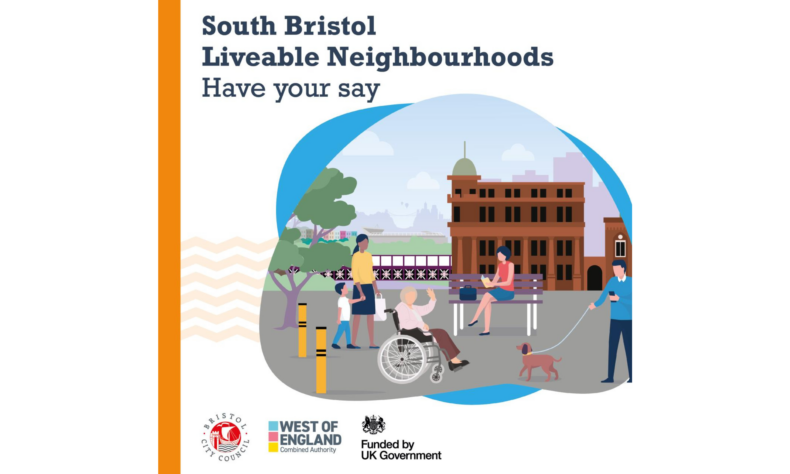South Bristol has been selected as the second Liveable Neighbourhood project in Bristol, covering the wards of Bedminster, Southville and Windmill Hill. The project aims to create a better balance between how streets are used for vehicles and people, making them safer, more pleasant, and healthier places to live.
Liveable neighbourhoods are designed in partnership with local communities to make it easier to catch a bus, walk or cycle. They can include a variety of improvements, such as; measures to reduce traffic taking short cuts through residential streets and near schools, improved crossings to help connect neighbourhoods, planting more trees, providing more benches and community spaces, and improving lighting.
There are many benefits of Liveable Neighbourhoods, including:
- Safer for children to get to school
- Quieter, more pleasant streets
- An active and healthier population
- Less isolation
- More trees, flowers and greenery
- More opportunities for neighbours to socialise
- More opportunities for children to take part in unstructured play
- Cleaner air to breathe
The study area in South Bristol was chosen for the Liveable Neighbourhoods project because the area has a high demand for walking and cycling routes, and is close to major developments, such as Bedminster Green and Temple Quarter. The local council ward members were also active in requesting this project for their wards.
Councillor Tony Dyer, who is both Leader of the Council and a Ward Councillor for Southville
This project is about creating better neighbourhoods for everyone to live in. We want to cut down on rat-runs and through traffic to create safer streets for our children and make it easier and more pleasant to walk and cycle.
South Bristol Liveable Neighbourhoods represents a huge investment in the area, and we want everyone to have a say to help us develop the plans for the next stage.
The Liveable Neighbourhood project will build upon learnings from the East Bristol pilot and engagement events will be taking place throughout July, August, and September to understand the community’s needs.
Residents can take also give their views online, at www.bristol.gov.uk/sbln-engagement
